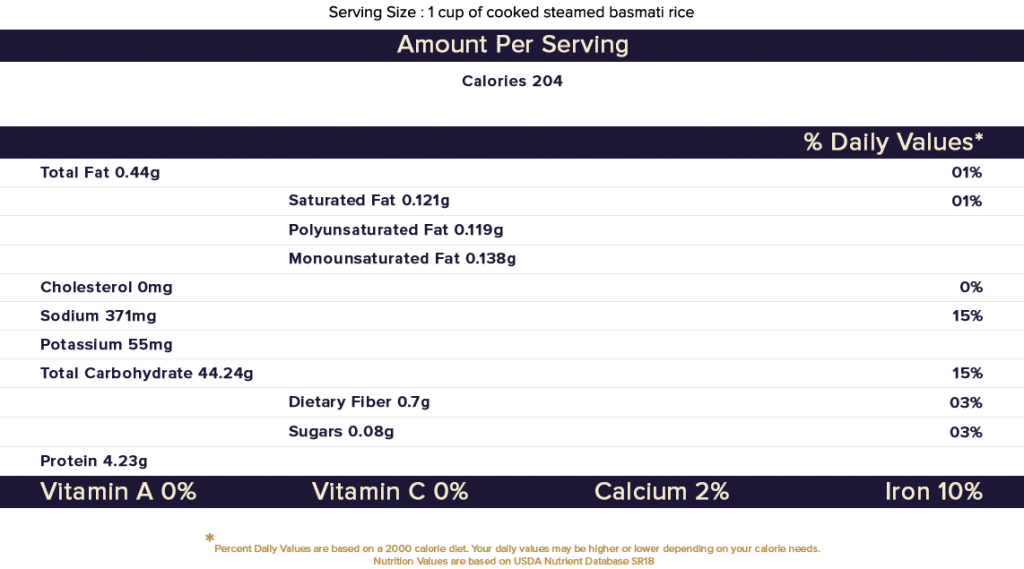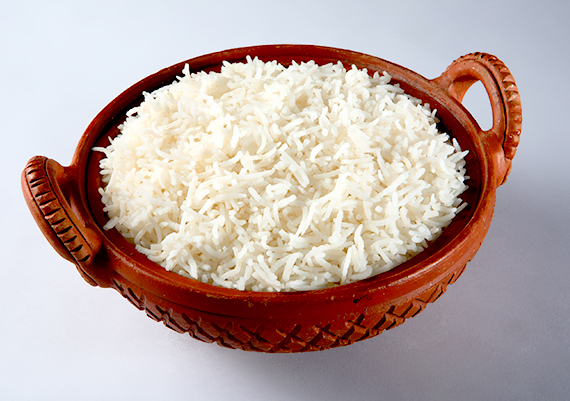
All About
Rice
Rice is the second highest worldwide production after maize (corn). Since maize is mostly grown for purposes other than human consumption, rice is the most important grain for human consumption. There are more than 40,000 varieties of rice that grow on every continent except on Antarctica. Rice is a complex carbohydrate that does not have sodium or cholesterol and barely any fat.
The cultivation of rice is suited for countries with low labor costs and high rainfall as it is very labor intensive and requires large amounts of water for cultivation. Small rice seedlings are hand planted into rice paddies that are then filled with water. The seeds draw nutrients from the paddies water, which is also the same water.
Chemical analysis of Rice & Basmati
Nutrition Facts


10%
of RDI*
(204 calories)
![]()
Calorie Breakdown
Varieties of
Rice
There are more than 40,000 varieties of cultivated rice (the grass species Oryza sativa) said to exist. Over 90,000 samples of cultivated rice and wild species are stored at the international rice gene bank. The rice varieties can be divided into 2 basic groups, long grain, and all-purpose & specialty.
Long grain
(all-purpose rice)
There are many varieties of rice and culinary preferences tend to vary regionally. However, all the varieties are categorized into:
Basmati Rice
Non-Basmati Rice (The variety which is not Basmati Rice)
Our Basmati Rice
The Traditional Basmati, famously known as the ‘Queen of Fragrance, delivers a perfect combination of aroma, elongation, and a distinctive sweet taste, is nourishing for the body tissues and is easy to digest.
Rice sector of Pakistan
Pakistan is the 4th largest producer of rice following China, India, and Indonesia. Rice is the major export product of Pakistan following wheat, and cotton, its export earns about 13% of the country’s foreign exchange making it the second most important source of foreign exchange following cotton, the total share of Pakistan in the world’s trade of rice is up to 10% while 25% in world’s trade of basmati rice. Basmati rice covers 52% of the total cultivated area of rice in Pakistan.
Generally in Pakistan rice production system is followed by the rice-wheat production system means both are grown in an alternate pattern, as rice is grown in the monsoon months and wheat in the cooler months of the winter season, in the province name Punjab there is sufficient water available to grow rice in the kharif season (summer) as per the requirement of rice while wheat is grown in the rabi (winter) months from November to April.
Rice is cultivated over 10% of the total cropped area of the Islamic republic of Pakistan. It is contributing approximately 6.7 % in value addition of agriculture and the contribution of rice to GDP is about 1.3-1.6% of total GDP.
